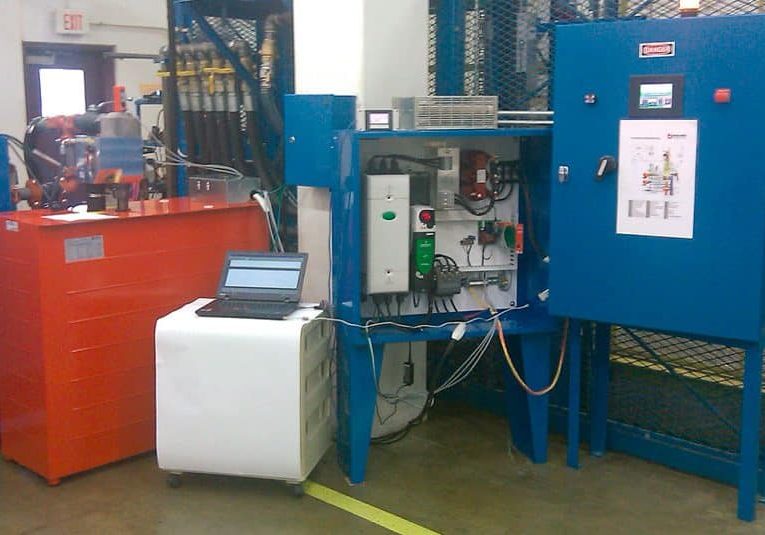Vancouver’s Eye of the Wind is one of the world’s first wind-turbine viewing towers with a public elevator.
The Eye of the Wind, perched atop Vancouver, Canada’s Grouse Mountain, is one of the world’s first wind-turbine viewing towers with a public elevator. Completed in 2010, the Eye of the Wind’s viewPOD™ transforms the wind turbine into an interactive, educational tourist attraction and is the city’s first commercially viable wind turbine. However, building a 20-story public elevator in an active seismic-fault region inside a continuously moving structure that provided one-third of the amount of space needed for a standard installation proved to be quite a challenge.
The resort’s location, the size and weight of the components and their points of origin from around the globe made construction of the turbine itself difficult. The 122-ft. blades were airlifted to the peak of the mountain after arriving in Vancouver via barge. The tower sections, each weighing more than 50 tons, arrived at the construction site after a slow trek up the mountain’s 8 mi. of winding roads. Even the preassembled viewPOD traveled across Canada via train to reach its destination. Once the pieces were in place, engineers had to decide how to not only house the observation pod, but also the elevator itself. KONE was selected for the project and worked closely with a number of different contractors to complete the job.
The construction of the entire project required assembling the tower in pieces, which meant engineers could not install the access elevator until after the tower was fully erected. Also, the base of the tower measured a standard 13 ft. in diameter, but the tower tapered at the top to just over 6.5 ft. in diameter. Taking into account the seismic requirements of Grouse Mountain, the tower’s continuously swinging structure and the limited space inside, KONE fitted the Eye of the Wind with its MonoSpace© machine-room-less (MRL) solution powered by its EcoDisc hoisting technology, allowing engineers to maximize use of the restricted space, while ensuring safe and energy-efficient operation.
Once the size and type of the elevator were deter-mined, the KONE Marine Department, which has experience with moving structures, was brought in to help design and implement the elevators. Being part of an active fault line means that Grouse Mountain is literally moving. At the same time, due to the pressure from the wind and design of the tower itself – which pivots to capture the best winds – the structure is also constantly moving. The Marine Department’s solution combined KONE’s MRL technology with a seismic installation and an emergency-brake release system.
John Hemgard, coordinator of the project at KONE Marine & Major Projects, stated:
“This project was unique in that it drew on existing technologies but applied them in an innovative way. So many people worked together to make this happen, from the turbine builder to Grouse Mountain to the local KONE installation team. This was a clear example of how existing KONE technologies were used by the teams, which collaborated and drove the completion of the project.”
The Eye of the Wind was inaugurated in February 2010 at an event attended by local and international dignitaries. After a 35-s. ascent to the top of the 223-ft. tower, visitors exit the elevator and step into the viewPOD. This glass-encased room, suspended directly below the hub of the turbine’s blades, gives 360° views overlooking Vancouver’s harbor, the Coastal Mountain Range and the Canadian countryside. The wind turbine is capable of producing 1.5 mW of energy and is expected to offset up to 25%of Grouse Mountain’s annual operational electricity needs.
The Eye of the Wind is an important educational vehicle for the wind industry. The experience helps to dispel myths and rumors about noise pollution from the blades and amends the public’s perception of the towers. The installation of KONE’s public elevator makes this possible and helps wind turbines be seen as part of the environments in which they stand, striking a balance of responsibility, both in economic and ecological terms.
Get more of Elevator World. Sign up for our free e-newsletter.










